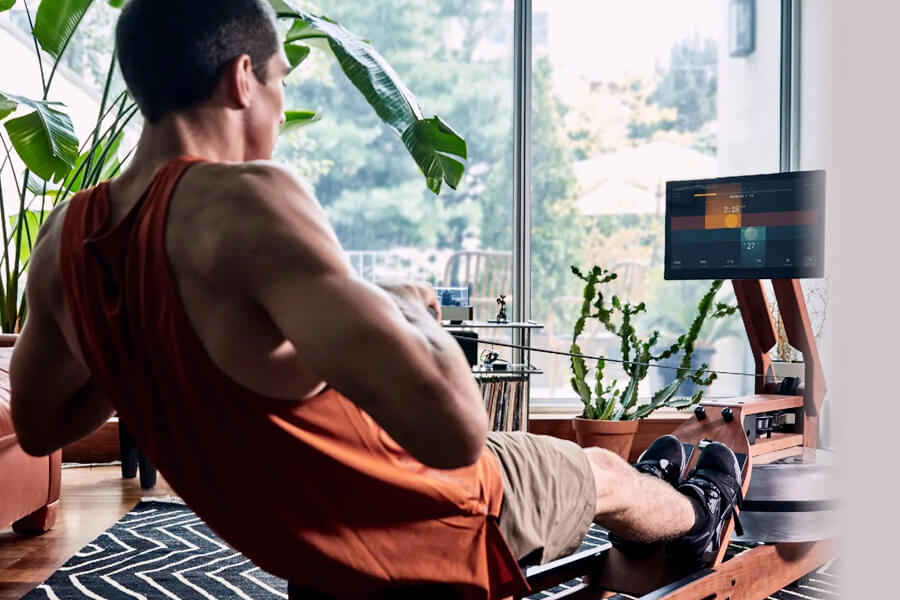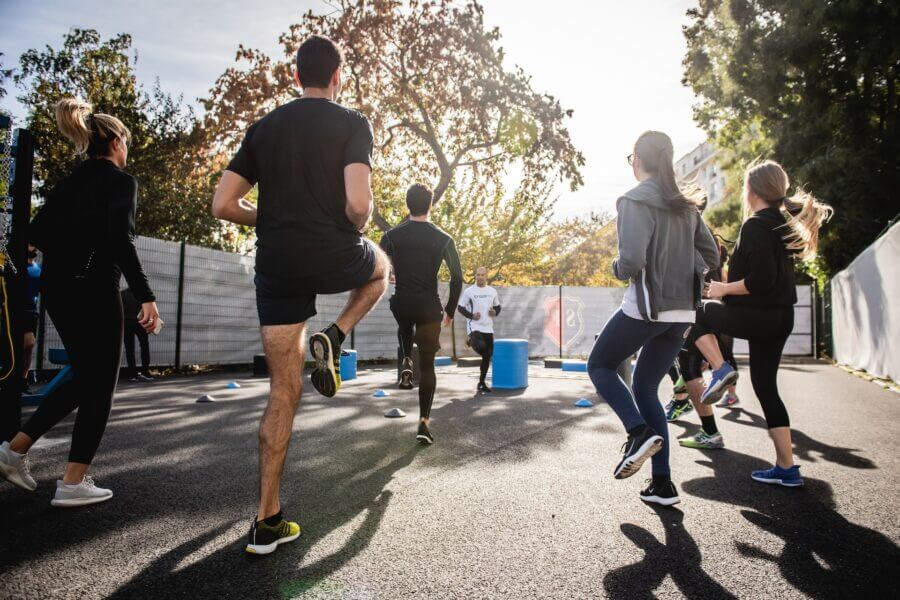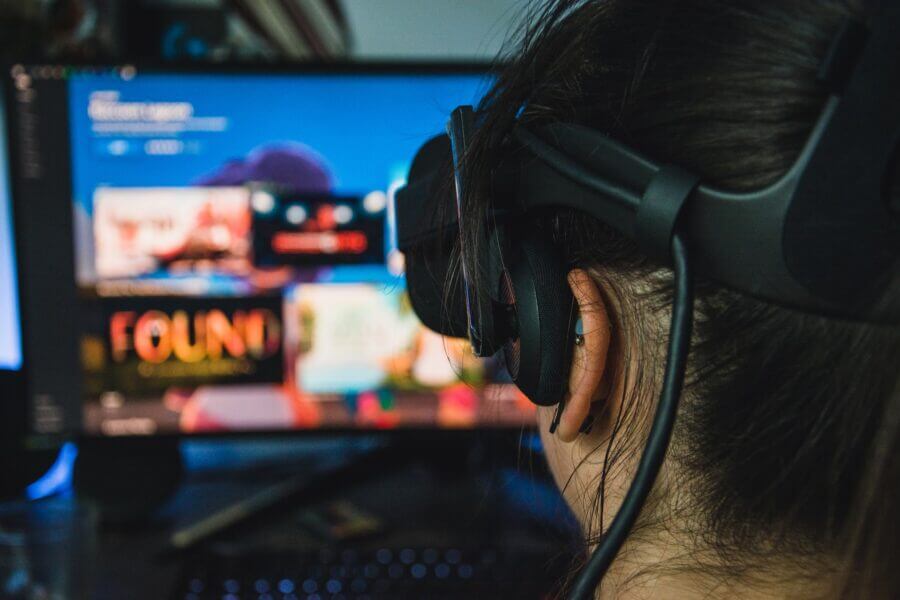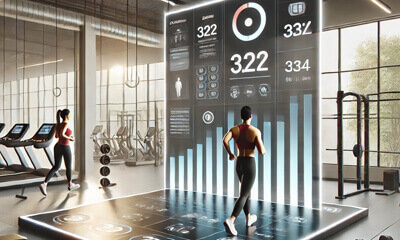Gamification is the application of elements typically found in games to other areas of life. If you’re a fan of playing games, you’ll be familiar with things such as earning experience points, completing challenges and levelling up. Casino sites such as Rabona use similar features to encourage players to log in and enjoy games regularly. If you’re looking to increase your motivation to work out and improve your fitness, gamification could be the answer.
A lot of people would like to improve their overall fitness and become stronger and healthier.
However, motivation is often an issue. It’s not easy to get up and motivate yourself to go to the gym every day, and results can take a long time to see, even if you’re putting in a lot of work. Sustaining motivation over time is the biggest problem for most people trying to improve their fitness, as not being consistent enough means that results will be less noticeable.
Gamification could provide a solution, helping people stay on track with their fitness goals and stay motivated over long periods of time. Eventually, this can lead to healthy habits being formed that last a lifetime and allow people to be stronger and healthier over many years. If you’re interested in gamification and fitness, here’s how to get started.
How Does Gamification Work?
Gamification is the simple process of turning tasks into challenges and providing rewards for completing them. Video games and casino sites such as Rabona use gamification well, offering rewards to players who complete tasks. Even if these tasks are repetitive, the process of earning a reward means that players are more than happy to complete them again and again.
The act of providing rewards to someone after they complete a task is known as positive reinforcement. It’s an important concept in psychology, and it helps encourage this behaviour in future, creating a habit even if the reward is no longer offered. Positive reinforcement is used to help children learn, but it’s also helpful for adults to learn new habits too.

Gamification in fitness
The concept of gamification can also be combined with a competitive element to increase motivation even more. Competitive games tend to be far more popular for longer, as people have an innate need to compete and prove their abilities. Defeating real opponents provides a rush and also creates a positive reinforcement reward that will mean the player keeps playing for longer.
Games provide rewards in the form of experience points which level up a character and unlock new items and abilities. While these might not be real-world rewards, they’re still important to the players and increase their desire to play. Casinos such as Rabona might combine experience points and levels with VIP rewards, giving players useful rewards for playing more frequently.
Applying Gamification to Fitness
Fitness is perfect for gamification as it involves repetitive tasks that have to be completed regularly to see results. Although it might take a long time to see results in fitness, providing rewards and completing challenges can make the experience of getting fit more fun and allow you to increase your motivation.
Tracking Your Progress
The first step towards applying gamification to fitness is by tracking your progress. Whether you’re lifting weights, working on your cardio or improving your nutrition, it’s fairly simple to track progress and make a note of where you’re at. With lifting weights, you can record how many sets and reps you completed for your program. With cardio, you can track the number of steps you’ve made, your heart rate or how long you exercised, and for nutrition, you can count your calories.
Fitness apps can be a convenient way to do workouts and track your progress • Photo by Luke Chesser on Unsplash
These days, there are a lot of different fitness trackers that you can use to make tracking your progress even easier than ever. While you don’t need the most expensive gadget on the market, the more metrics you’re able to track, the more information you’ll have to record your progress and reward yourself for improvements.
Creating Challenges
Once you’ve gotten started tracking your progress, it’s time to create some fun challenges. These should be based on your current goals and progress and ideally should break your goals up into small parts to make them more manageable. Most games start out with easy challenges and ramp up the difficulty as you progress, and you can do something similar.
Some easy beginner challenges could include going to the gym for the first time and completing a week of working out three days a day. You can also create challenges for completing a certain amount of time on your workout. For example, a challenge for completing 30 minutes or an hour. Don’t be afraid to get creative, too, creating challenges for completing different exercises or for pushing past your limits.
Remember that these challenges should be fun and ideally help you to complete your main goals. So if your goal is to be able to run a 5k, you need to be creating challenges that get you running and improving your cardio and fitness levels. If you want to lose weight and improve nutrition, your challenges should focus on this.
Competing With Friends
You can make challenges and exercise even more fun if you add a competitive element. Just as video games are more fun when you compete against other players, getting in the gym and working out can be more enjoyable when you’re challenging your friends. If you both have a fitness tracker, you can accurately track each other’s progress and improve your workouts to stay ahead.

Group training can be fun • Photo by Gabin Vallet on Unsplash
Some people go further and join leaderboards with their friends and other people online, taking on new challenges and pushing themselves to do better. However you choose to compete, make sure it’s all fun and games and be sure to agree on a prize for the winner.
Rewarding Yourself
One of the most important aspects to remember when gamifying your fitness journey is the rewards. You want to create positive reinforcement and ensure that your good behaviours become a habit over time. Each time you complete a challenge or win a competition with a friend, you can reward yourself with a prize or a treat.
These rewards should be something you enjoy as well as something that won’t interfere with your progress. For example, if you’re trying to improve your nutrition, don’t go overboard with cheat meals each time you complete a challenge. Give yourself bigger rewards for completing more difficult challenges to keep up your motivation as you improve.
Rewards can include playing your favourite games at Rabona, treating yourself to a nice meal at your favourite restaurant, going shopping for some new clothes or just taking some time for yourself and not worrying about any responsibilities for the day. There are many ways you can reward yourself, and it’s important to mix these up and give yourself something new to enjoy from time to time.
The Future of Gamification in the Health and Fitness Industry
While many dismissed gamification as a fad when it first emerged, it’s now taken hold of the industry and keeps growing each year. New technologies and innovations have made gamification more exciting and enjoyable than ever before, allowing anyone to improve their fitness journey and achieve the results they’ve always wanted.
As technology continues to advance, there’s little doubt that we’ll continue to see big changes in how gamification affects fitness. Improved social aspects, integrating with virtual reality and even earning real-world rewards could all be in the future of fitness if gamification keeps developing. Here are some examples of what how the future of gamification might look like.
Better Social Connectivity
Social challenges and leaderboards help to make fitness more competitive and increase people’s motivation to do well. The future of gamification in the fitness industry will likely expand on this concept, introducing new ways for people to compete with one another and even complete challenges together.

Why Do You Feel So Unmotivated? Renew Your Motivation Now
Motivation is a transformative tool that allows us to get so much accomplished in life. Here are the common causes we may be lacking motivation.
People are generally more motivated to do well if they have accountability from friends, and gym partners can motivate each other to do well. With social fitness apps, you can have gym partners in other countries competing with you and motivating you to work out at your best. Not only that but getting praise and congratulations from others will further increase the motivation to do well.
Virtual Reality and Fitness
Currently, fitness services such as Peloton and Lululemon Studio give users access to thousands of interactive workouts that they can follow along from home. Similar to classic workout videos, these new services are far more motivating as they feature real trainers who are there to instruct and motivate you to give your best.

Virtual Reality and Fitness • Photo by Christine Sandu on Unsplash
The future of fitness could implement these ideas alongside virtual reality, making it far more immersive and exciting. With virtual reality headsets, users can feel like they’re in a real gym getting instruction from their trainer, and this can feel a lot more motivating.
Earning Real Money for Exercising
In recent years, a number of apps have been launched that give users payment in crypto for completing workouts and fitness challenges. These apps can be downloaded onto a mobile and reward users or complete a certain number of steps outside, allowing them to use their crypto to purchase gift cards and real items.
The act of rewarding people for completing exercise will help to create positive reinforcement and leads to greater motivation. While earning rewards is slow at current apps, this idea could grow in the future and offer much bigger real money rewards just for completing fitness challenges.












